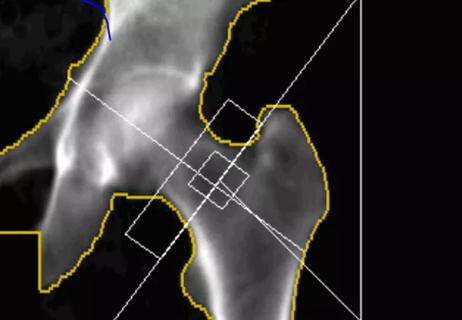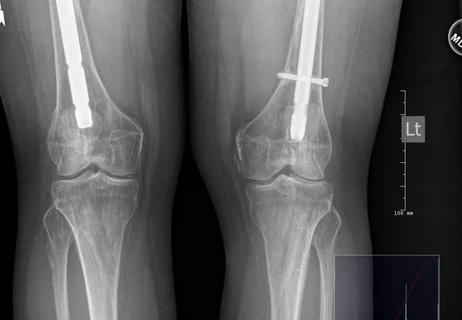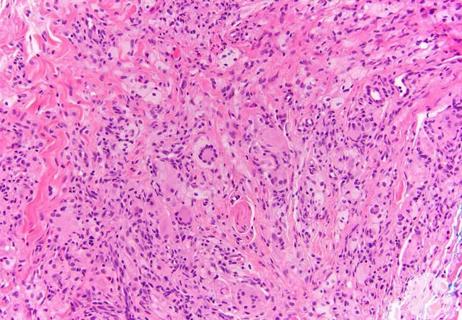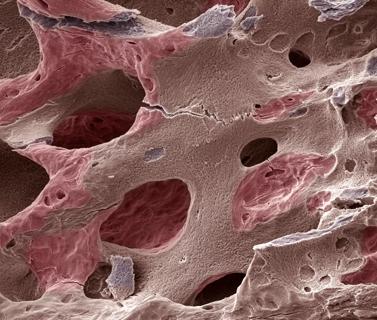Advertisement
Beyond bisphosphonates

Advertisement
Cleveland Clinic is a non-profit academic medical center. Advertising on our site helps support our mission. We do not endorse non-Cleveland Clinic products or services. Policy
Rheumatologists have used biologic agents for inflammatory arthritis since etanercept was introduced in 1998. The biologic era for the treatment of low bone mass began with the introduction of denosumab in 2010. Romosozumab, a second biologic for metabolic bone disease, has a Prescription Drug User Fee Act (PDUFA) date of July 2017 and may be available in late 2017.
I recently presented an update on the use of biologic therapies for metabolic bone disease at the Biologic Therapies Summit VII hosted by Cleveland Clinic’s R.J. Fasenmyer Center for Clinical Immunology. Denosumab and romosozumab work on different pathways but offer new options for patients with low bone mass as primary therapy and for those unresponsive to or contraindicated for bisphosphonates.
Denosumab is a fully human monoclonal antibody directed against rank ligand, a key cytokine required for both osteoclast development and function. The FREEDOM trial showed denosumab reduced the risk of vertebral fractures by 68 percent, hip fractures by 40 percent and nonvertebral fractures by 20 percent, all clinically significant. The FREEDOM extension trial enrolled over 4500 patients for 10 years, giving clinicians important information on the long-term efficacy and safety of denosumab.
Like the biophosphonates, denosumab is an antiresorptive agent, but it is unique in a number of aspects:
Advertisement
Advertisement
In addition to infection, hypocalcemia is a potential side effect of denosumab, especially in patients with severe renal impairment. These patients should be vitamin D-replete, treated with calcium and have serum calcium levels tested frequently after denosumab injection. Higher than normal calcium supplementation may be required as well as the use of calcitriol to maintain serum calcium levels.
Romosozumab is a fully human monoclonal antibody targeting sclerostin, an important inhibitor in the Wnt signaling pathway. While denosumab is an antiresorptive agent, romosozumab is an anabolic agent. Unlike teriparatide, the currently available anabolic agent, romosozumab does not stimulate bone resorption and actually has an antiresorptive effect. The drug is given once per month for 12 months as a subcutaneous injection.
The FRAME trial has been completed and an application for drug approval has been submitted to the FDA. The trial was unique in that the control arm was placebo for only one year followed by denosumab for a second year, while the treated arm was romosozumab for one year then denosumab for one year. All previous trials with osteoporosis drugs had a three-year placebo comparator.
A significant reduction in vertebral fracture was achieved at year one, but a reduction in nonvertebral fracture was not significant (P = 0.06), in part related to the short active versus placebo phase for this trial.
An additional reason for the nonvertebral fracture results was that 43 percent of the patients were enrolled from Latin America, where fracture rates are significantly lower than in other regions of the world. Only 3 percent of the patients in FRAME were from the U.S. If Latin American patients are excluded from the analysis, nonvertebral fracture reduction was significant.
Both denosumab and romosozumab target pathways only recently identified as critical in bone turnover. The potential addition of a new anabolic agent is especially important since use of the currently approved agent is limited to 24 months. Biologic agents have opened a new therapeutic era in the treatment of osteoporosis, offering new options for both primary therapy and for those patients for whom current treatments have been insufficient.
Dr. Deal is Head of the Center for Osteoporosis and Metabolic Bone Disease.
Advertisement
Advertisement

The many factors that influence 25(OH)D levels add complexity to questions about hypovitaminosis D

Benefit/AFF risk ratio favors 3–5 years of treatment

A case study from Chad Deal, MD, illustrates how patients may present

Puzzling constellation of findings lead to CT-guided bone biopsy

If denosumab is stopped, it should be replaced with another osteoporosis treatment

Dual-acting drug increases bone formation while decreasing resorption

Metabolic bone disease expert weighs evidence

An up-close look at a lifetime of broken bones across generations